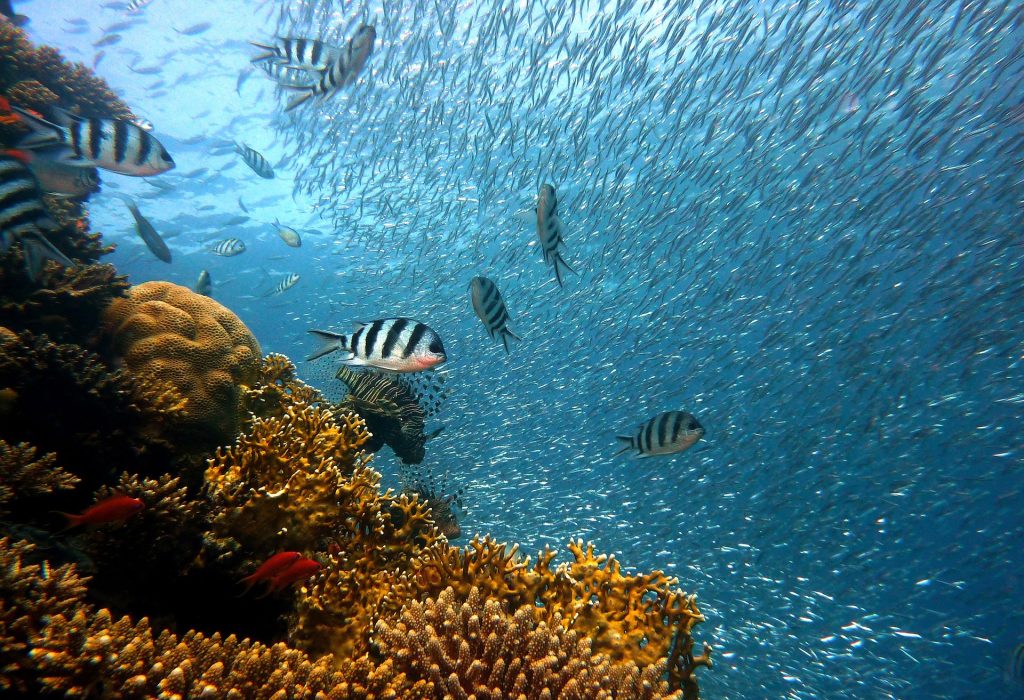Why Scientists Are Turning To Robots To Save Coral Reefs
Biologists in Australia are working to grow hardy coral specimens that can be propagated and transplanted with robotic arms onto dying sections of the Great Barrier Reef.
This article is more than 2 years old

The world of robotics is ever-evolving, with robots now doing everything from making donuts to cleaning hotel rooms. Now scientists have discovered that robots can also help save vulnerable coral reefs in ways that humans cannot. Biologists in Australia are currently working to grow hardy coral specimens that can be propagated and transplanted with robotic arms onto dying sections of the Great Barrier Reef.
The Great Barrier Reef is the largest reef complex in the world. It is a complex of coral reefs, islets, and shoals off the northeastern coast of Australia. It extends through the Pacific Ocean for more than 1,250 miles and its width ranges from 37 to 155 miles.
For years, sections of the Great Barrier Reef have been dying off due to rising ocean temperatures and higher water acidity levels. Biologists have collected fragments of living coral reefs and cut them into pieces to grow inside land-based nurseries. Scientists have cross-bred species to make them more heat-resistant and have experimented with adding probiotics to help guard them against deadly diseases.
Enter robots. Transplanting these new and improved corals onto damaged coral reefs by hand is an expensive, slow, and labor-intensive process. By designing robots with special image sensors, scientists hope they can accelerate the speed at which the Great Barrier Reef can repair itself.
Australian marine biologist Dr. Taryn Foster is one of the scientists leading the effort to use robots and automation to restore coral reefs. In between her studies, Foster worked at her family’s manufactured stone business, The Blockmakers. The company makes materials for construction projects, including pavers, retaining wall blocks, and limestone blocks.
In a serendipitous intersection of Foster’s career paths, the family’s business has a new branch, Coral Maker, that uses existing equipment to mass-produce limestone coral skeletons. Foster has set a goal of restoring a million corals each year. Using robots to insert seed plugs and coral fragments into the manmade skeletons is a major factor in exceeding her goal as automating the process can produce 1.7 million corals annually.
Time is of the essence because coral reefs are naturally sluggish growers. It takes three to 10 years for a coral to build an adult-sized skeleton on its own. But premade skeletons seeded with coral fragments and planted on reefs by robots can reach full size within 12 to 18 months, provided that light, temperature, and other conditions are favorable.
Foster’s manufactured skeletons are cast in similar shapes as natural coral skeletons, providing the young coral specimens with biologists in Australia are currently working to grow hardy coral specimens that can be propagated and transplanted with robotic arms onto dying sections of the Great Barrier Reef. solid foundation on which to grow. Foster hopes that the coral skeletons she has designed will eventually be replicated in other factories to provide more foundations for robots to graft with new corals.
Foster is working with researchers at the Autodesk AI Lab in San Francisco to create two types of robotic arms: one to cut and glue the coral fragments into plugs and another to implant plugs into the limestone skeletons. “Coral reef restoration has been happening around the world for the last few decades, but it’s mostly been NGOs doing it on a very small scale, and doing everything manually,” she told The Australian Financial Review. Foster hopes that utilizing robots will help her restore the Great Barrier Reef and other damaged coral reefs around the world before it’s too late.





